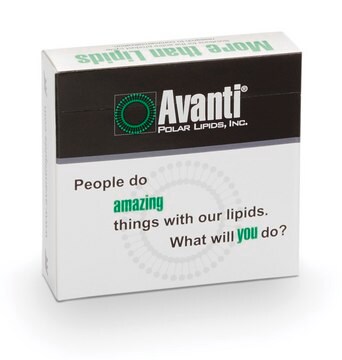AB10029
Anti-Ubiquityl Histone H2A.X (Lys119) Antibody
serum, from rabbit
Sinônimo(s):
H2AXK119Ub, Histone H2A.X Ubiquityl K119), H2A histone family, member X, H2AX histone
About This Item
Produtos recomendados
fonte biológica
rabbit
Nível de qualidade
forma do anticorpo
serum
tipo de produto de anticorpo
primary antibodies
clone
polyclonal
reatividade de espécies
mouse, human
reatividade da espécie (prevista por homologia)
rat (based on 100% sequence homology), bovine (based on 100% sequence homology), canine (based on 100% sequence homology)
técnica(s)
immunocytochemistry: suitable
immunoprecipitation (IP): suitable
western blot: suitable
nº de adesão NCBI
nº de adesão UniProt
Condições de expedição
wet ice
modificação pós-traducional do alvo
ubiquitination (Lys119)
Informações sobre genes
bovine ... H2Ax(531733)
dog ... H2Ax(489372)
human ... H2AX(3014)
mouse ... H2Ax(15270)
rat ... H2Ax(500987)
Descrição geral
Especificidade
Imunogênio
Aplicação
Immunoprecipitation Analysis: 5 µl from a representative lot immunoprecipitated Histone H2A.X in HeLa acid extract.
Epigenetics & Nuclear Function
Histones
Qualidade
Western Blot Analysis: 1:1,000 dilution of this antibody detected Histone H2A.X on 10 µg of HeLa acid extract.
Descrição-alvo
forma física
Armazenamento e estabilidade
Nota de análise
HeLa acid extract
Outras notas
Exoneração de responsabilidade
Não está encontrando o produto certo?
Experimente o nosso Ferramenta de seleção de produtos.
Código de classe de armazenamento
10 - Combustible liquids
Classe de risco de água (WGK)
WGK 1
Certificados de análise (COA)
Busque Certificados de análise (COA) digitando o Número do Lote do produto. Os números de lote e remessa podem ser encontrados no rótulo de um produto após a palavra “Lot” ou “Batch”.
Já possui este produto?
Encontre a documentação dos produtos que você adquiriu recentemente na biblioteca de documentos.
Nossa equipe de cientistas tem experiência em todas as áreas de pesquisa, incluindo Life Sciences, ciência de materiais, síntese química, cromatografia, química analítica e muitas outras.
Entre em contato com a assistência técnica








